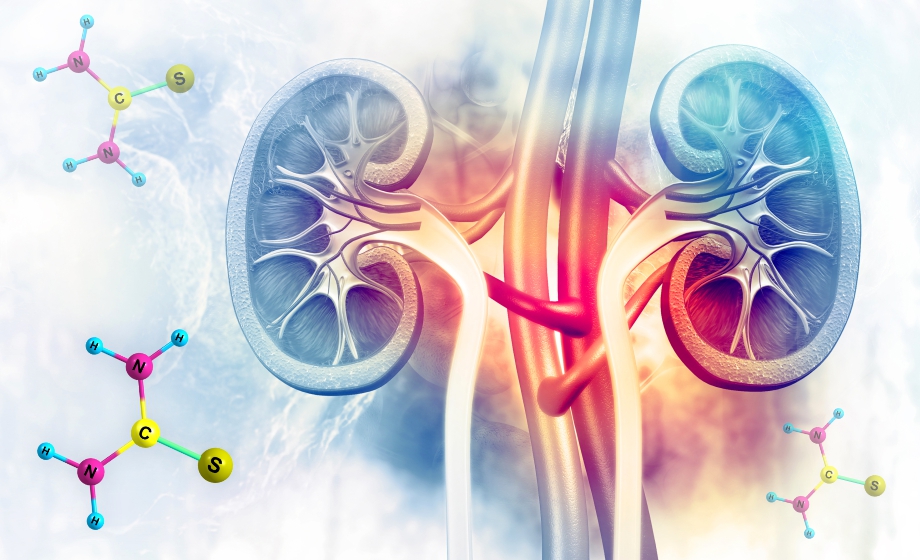Q&A Report: A Novel Approach to Removing Urea from Dialysate: Methods and Validation by Amino Acid Quantification

Answers in this Q&A Report are answered by:
Guozheng Shao, PhD
Acting Instructor, Division of Nephrology
University of Washington
Anna Scott, PhD
Director, Biochemical Genetics Laboratory
Seattle Children’s Hospital.
What chemical species other than amino acids can be characterized using amino acid analysis?
A. Scott: Ninhydrin will react with any compound with a free amine group. We often detect amine-containing antibiotics in plasma samples. There are a handful of medications that have been observed by HPLC/ninhydrin AAA instruments. These compounds are typically not quantified, but they could be if pure compound can be purchased and made into standards.
What are next steps for development of your 2-stage dialysis device?
G. Shao: We are currently improving the materials used in our photooxidation unit, to enhance the efficiency and reduce the size of the device. Part of the optimization involves redesigning the flow channels to enhance mass transfer within them. We are also testing the uremic toxins’ removal safety and efficiency using bovine blood.
Amino acid analysis using ion exchange/ninhydrin detection is a well-established technique developed in the 1950s. What is your view on the advances of newer technologies such as LC/MS for amino acids? How do they compare with classical AAA?
A. Scott: Mass spectrometry methods for amino acid quantification offer a lot of promise with improvements in sensitivity and specificity for some metabolites. For example, trace amounts of argininosuccinic acid are clinically significant. Also, mass spectrometry is less likely to miss small amounts of homocitrulline, another rare free amino acid that co-elutes with methionine in classical AAA methods. However, mass spectrometers have very high up-front costs and require technical expertise that is not practical for many smaller laboratories. The clinical reference laboratories are the ones who have largely transitioned to mass spectrometry methods because they have both sample volumes and technical expertise to support this methodology.
In contrast, the less-targeted approach of the ninhydrin/HPLC method of classic AA quantification can have diagnostic benefit. There is a rare genetic disease called prolidase deficiency which produces abnormal dimers with a C-terminal proline that are readily excreted in urine. Ninhydrin is able to react with these dimers to produce a very abnormal profile, but these can easily be missed by a mass spectrometer if not programmed into the method. Mass spectrometers rely upon the user programming in all compounds of interest, which means that they are inherently limited to what is known. The untargeted benefit of classic AA analysis can help a team identify the unexpected.
What detection levels do you require for your dialysis investigation?
G. Shao: The concentrations of most relevant uremic retention solutes are >0.1 mM. The impurities in dialysis water/dialysate follow the Centers for Medicare and Medicaid Services (CMS) rules and Association for the Advancement of Medical Instrumentation (AAMI) recommendations.
How would a researcher contact a clinical lab about collaborating?
A. Scott: Clinical laboratories typically have online test menus with assay details such as minimum sample volumes, sample types, units, and general methodology information. This is a great starting point to see if a clinical laboratory offers a test that may be helpful for your research. The test catalogs also typically list contact information for the laboratory, such as phone numbers or email addresses. A researcher looking to collaborate with a clinical laboratory should ask for a clinical chemist (or equivalent) with a PhD to discuss possible research activities.
There are patients for whom dialysis is needed to remove other molecules (e.g. ammonia, leucine). Do you think it would be possible to make other 2-stage devices that enable selective removal of other compounds that could be patient/disease specific while minimizing the loss of beneficial metabolites?
G. Shao: There could be a wide range of 2-stage devices that can target different molecules/groups of molecules. The secondary membranes we have used in the past have low MWCO so that they preferably let through small neutral molecules like urea, as desired in the treatment of ESRD patients. We need to understand/create new membranes to create 2-stage devices with new selectivities.
What kinds of samples can be tested for free amino acids? Can you test samples from model organisms?
A. Scott: Clinical testing is most often done in plasma or serum from whole blood. Free amino acids can also be measured in urine and cerebral spinal fluid. Amino acids can definitely be quantified in model organisms. During my post-doc, I collaborated on a project using fruit flies and we were able quantify free amino acids, acylcarnitines, and glutathione using mass spectrometry methods. Basically, the sample processing steps readily accommodate samples from a variety of sources for amino acid quantification.
What is the sensitivity of ninhydrin detection?
A. Scott: We can measure free amino acids down to 2 µM concentrations. Mass spectrometry can measure free amino acids below this concentration, but it may be compound specific and more sensitive to slight differences in chemical properties and ability to ionize.
What is the role of albumin in hemodialysis patients?
G. Shao: The preferred range for the serum (blood) albumin is 4.0 g/dL or greater for dialysis patients. One of the goals of high-flux hemodialyzers is to maximize the removal of large molecules while retaining albumin.
Does the blood sample need to be centrifuged before being delivered to your lab?
A. Scott: Samples for amino acid testing should be centrifuged to remove any cells and stored frozen until time of analysis. Microbial growth will compromise samples and if left at room temperature some free amino acids will break down (e.g., asparagine will convert to aspartic acid). Typical clinical testing is targeting free amino acids in plasma, so removing cells by centrifugation is best done quickly after collecting the blood to minimize changes secondary to hemolysis of the red blood cells.